Get the fix to “0x0000005A error for Windows XP, Vista, 7, 8, 8.1 and 10 operating systems.
Contents
About the “0x0000005A” error
The following information on this error has been compiled by NeoSmart Technologies, based on the information gathered and reported by our global network of engineers, developers, and technicians or partner organizations.
Description and Symptoms
The error messages, alerts, warnings, and symptoms below are tied to this error.
Symptom 1: 0x0000005A error screen on startup
0x0000005A is also known as CRITICAL_SERVICE_FAILED. It’s a Blue Screen of Death error (or BSoD error) that’s causing your Windows operating system to stop working completely. It is usually caused by a malfunctioning hardware from your PC or issues with a device driver.
The error code is usually displayed at the “Technical Information” paragraph and its error name (“CRITICAL_SERVICE_FAILED”) is at the top of the screen.
If the blue screen shows any of the following references, then the error affecting your Windows system is 0x0000005A:
- 0x0000005A
- STOP: 0x0000005A
- CRITICAL_SERVICE_FAILED
The “CRITICAL_SERVICE_FAILED” doesn’t always appear in the error screen, but the error is identified by the “0x0000005A” code.
The error screen usually looks like this:
The text of the error screen can be different depending on your Windows version (Vista, 7, 8 or 10), but in most cases the text reads:
A problem has been detected and Windows has been shut down to prevent damage to your computer. CRITICAL_SERVICE_FAILED If this is the first time you've seen this Stop error screen, restart your computer. If this screen appears again, follow these steps: Check to make sure any new hardware or software is properly installed. If this is a new installation, ask your hardware or software manufacturer for any Windows updates you might need. If problems continue, disable or remove any newly installed hardware or software. Disable BIOS memory options such as caching or shadowing. If you need to use Safe Mode to remove or disable components, restart your computer, press F8 to select Advanced Startup Options, and then select Safe Mode. Technical Information: *** STOP: 0x0000005A (0x00000001, 0x00000001, 0x00000000, 0x00000000) Collecting data for crash dump ... Initializing disk for crash dump ... Beginning dump for physical memory. Dumping physical memory to disk: 100 Physical memory dump complete. Contact your system admin or technical support group for further assistance.
Causes of this Error
This error has been known to occur as a result of one or more of the following:
Cause 1: Outdated device driver
The main cause of this error is an outdated or corrupt device driver. This may happen after a Windows update, a disk read/write error, or a system downgrade.
Cause 2: Corrupt system files
Another common cause for this error is a key system file that became corrupt or missing. This usually happens after virus attacks, power outages or disk read/write errors.
Fixing “0x0000005A” on Windows
Windows Setup CD/DVD Required!
Some of the solutions below require the use of the Microsoft Windows setup CD or DVD. If your PC did not come with a Windows installation disc or if you no longer have your Windows setup media, you can use Easy Recovery Essentials for Windows instead. EasyRE will automatically find and fix many problems, and can also be used to solve this problem with the directions below.
Fix 0x0000005A with Easy Recovery Essentials
Easy Recovery Essentials is guaranteed to fix the “0x0000005A” error automatically using its built-in Automated Repair option. EasyRE is currently available for Windows XP, Vista, 7, 8, Windows 10, and Windows 11 and can be downloaded and created on any PC.
- Download Easy Recovery Essentials. Make sure to note your Windows version (XP, Vista, 7, 8, 10, or Windows 11) before you download EasyRE. This guide can help you identify what version of Windows you have installed.
- Burn the image. Follow these instructions on how to burn the bootable ISO image very carefully, as making a bootable CD can be tricky! Alternatively, these instructions explain how to create a bootable EasyRE recovery USB stick/drive.
- Boot up your PC from the Easy Recovery Essentials CD or USB you created.
- Once EasyRE is running, choose the “Automated Repair” option and click Continue.
- After EasyRE scans your computer’s drives, identify and select the drive letter for your Windows installation from the list, and then click on the Automated Repair button to begin.
- Easy Recovery Essentials will start analyzing the selected drive for problems. EasyRE will test for and attempt to automatically correct errors with the disk, partition, bootsector, filesystem, bootloader, and registry. No intervention is required, as EasyRE’s repair is fully automated:
- Once the process is complete, EasyRE will report its findings. Click on the Restart button to reboot your PC and test the changes.
- The “0x0000005A” error should now be fixed as your PC begins to load:

You can download Easy Recovery Essentials from here.
Fix 0x0000005A on Windows XP
Fix #1: Remove hardware or uninstall device driver
The most common cause for 0x0000005A error to appear is an incompatible hardware or device driver with your Windows XP system.
If you recently plugged-in a new hardware or installed a new device driver, follow these steps:
- Remove the hardware from your computer and reboot. You can also remove any peripherals (scanners, printers etc), leave only your keyboard and mouse, and restart the computer.
- Boot into Safe Mode and uninstall the device drivers.
To boot Windows XP into Safe Mode, follow these steps:
- Reboot the computer
- Press the F8 key as soon your Windows starts before the Windows XP logo appears
- The Windows Advanced Options Menu should now appear
- Select Safe Mode
- Press Enter
Fix #2: Run chkdsk
The chkdsk and sfc instructions explained in Fix #2 and Fix #3 are recommended to run, if Fix #1 didn’t worked to fix the error.
If Fix #1 or Fix #2 aren’t working to fix the error, go to Fix 0x0000005A with Easy Recovery Essentials.
To run the chkdsk command, follow these steps:
- Insert the original Windows XP installation CD in the disc tray
- Restart the computer and boot from the CD
- Press R to open Recovery Console
- Enter the Administrator password
- When Command Prompt appears, type this command and press Enter:
chkdsk C: /r
Replace
C:with the letter of the drive where your Windows XP is installed.
Fix #3: Run sfc
Similar to chkdsk above, the sfc command is recommended to be tried if you’re faced with the 0x0000005A error on a Windows XP system.
To run sfc, follow these steps:
- Insert the original Windows XP installation CD in the disc tray
- Restart the computer and boot from the CD
- Press R to open Recovery Console
- Enter the Administrator password
- When Command Prompt appears, type this command:
sfc /scannow /offbootdir=c:\ /offwindir=c:\windows
Replace
c:with the letter of the drive where your Windows XP is installed. - Press Enter
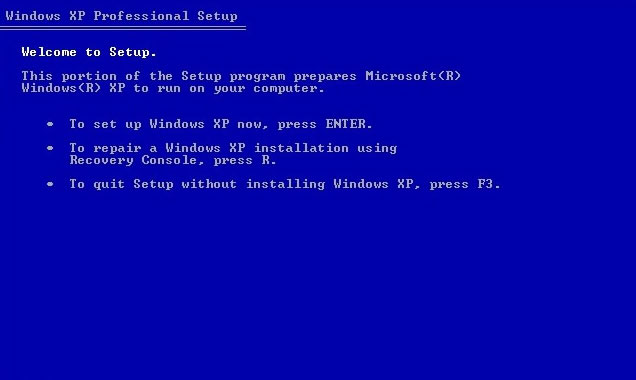
Recovery Console in Windows XP
Fix 0x0000005A on Windows Vista
Fix #1: Remove peripherals
If the error is caused by a new peripheral that you may have added to your computer, try to remove all peripherals and restart your computer:
- Remove any plugged-in peripherals from your computer. Do not remove your keyboard and mouse.Peripherals are: scanners, printers, USB drives, smartphones, tablets etc.If you have a laptop: remove the laptop from the dock station, if it’s docked. Do not run the laptop on battery, plug the AC adapter in and start your laptop.
- Restart your computer.
Apply these steps for any hardware you may have installed recently. Remove the hardware and restart your computer.
Fix #2: Boot into Last Known Good Configuration
If Fix #1 above doesn’t work, try booting your Windows Vista into the Last Known Good Configuration mode.
To do so, follow these steps:
- Restart your computer
- Start to tap the F8 key repeatedly before the Windows Vista logo appears, but after the BIOS screen (the screen with your manufacturer logo and/or system information)
- When the boot menu appears, select Last Known Good Configuration (Advanced)
- Press Enter
Fix #3: Uninstall drivers
If 0x0000005A isn’t caused by a hardware malfunction, it might be because of a device driver. Issues with device drivers is a very common cause for this error.
If you recently installed a new device driver, uninstall it and restart your computer.
If you can’t boot into Windows Vista because of the blue screen error, boot into Safe Mode and uninstall the driver:
- Reboot the computer
- Press the F8 key. Press F8 before the Windows Vista logo appears.
- At the Advanced Boot Options screen, select Safe Mode
- Press Enter
If uninstall the device driver isn’t an option, try to update the driver to its latest version available and make sure it’s compatible with Windows Vista.
Fix #4: Run Startup Repair
Certain Windows Vista computers may have the Startup Repair tool already installed on the hard disk. If it’s not installed (see steps below on how to check this), use your Windows Vista installation disc to access System Recovery Options > Startup Repair.
If you don’t have the Windows Vista installation disc, you can use Easy Recovery Essentials to fix 0x0000005A.
To check if you have the system recovery tools installed on your hard disk, follow these steps:
- Restart the PC
- Press the F8 key as soon as your PC starts to boot. Do this before the Windows Vista logo appears on your screen.
- At the Advanced Boot Options menu, check if you have a Repair your computer option listed
- If so, select Repair your computer and press Enter
If you don’t have the Repair your computer option listed, you don’t have the necessary system recovery tools installed on your PC.
To access the recovery tools, you need to use the original installation disc. Follow these instructions:
- Restart the PC
- Insert the Windows Vista installation disc in the disc tray
- When it’s time to boot from the CD/DVD, at the “Press any key to boot from CD or DVD…” message, press any key to boot from the media
- Click Repair your compute at the Install now screen
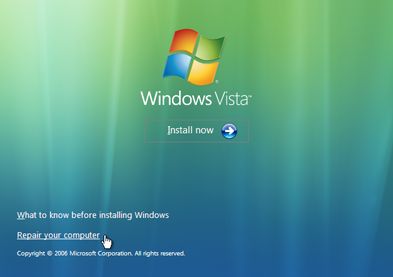
- Choose the operating system from the presented list
- Click Startup Repair
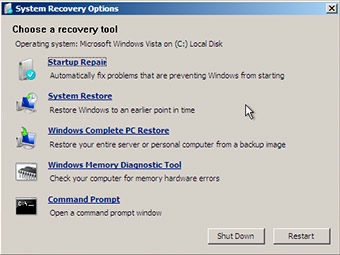
- Follow the instructions of the wizard to continue
Fix 0x0000005A on Windows 7
Fix #1: Easy fixes
If your Windows 7 system doesn’t start because of the 0x0000005A code, you can try some easy fixes.
If these fixes didn’t work to fix the error, go to Fix #2 below or Fix 0x0000005A with Easy Recovery Essentials.
Remove any external hardware
Usually, this error is either caused by a hardware malfunction or hardware that’s not compatible with Windows 7 or by incompatible device driver.
Follow these steps and reboot your Windows 7:
- Remove any external hardware or peripherals that you may have recently added to your system. This includes scanners, printers, USB flash drives, external HDDs and so on.Do not remove your mouse and keyboard.
- Restart your computer and check if the blue screen appears again
Boot into Last Known Good Configuration
You can boot into Windows 7 into the Last Known Good Configuration by follow these steps:
- Restart your computer
- Before the Windows 7 logo appears, press the F8 key
- At the Advanced Boot Options menu, select Last Known Good Configuration
- Press Enter
Fix #2: Uninstall device drivers
If temporarily removing newly added hardware isn’t fixing the error, check if you have incompatible device drivers installed on your Windows 7. Issues with incompatible device drivers are a common cause for 0x0000005A.
Boot your Windows 7 system in Safe Mode and uninstall the device driver:
- Restart your computer
- Press the F8 key as soon as your computer boots
- Select Safe Mode at the Advanced Boot Options screen
- Press Enter
Fix #3: Startup Repair
Unlike Windows Vista above, Windows 7 systems usually have the necessary system recovery tools installed on the hard disk to open Startup Repair. Startup Repair will try to automatically fix issues that’s preventing Windows to start.
To open it, follow these steps:
- Restart your computer and press the F8 key as soon as your computer boots
- Select Repair Your Computer

- Press Enter
- System Recovery Options should now be available. Click Startup Repair
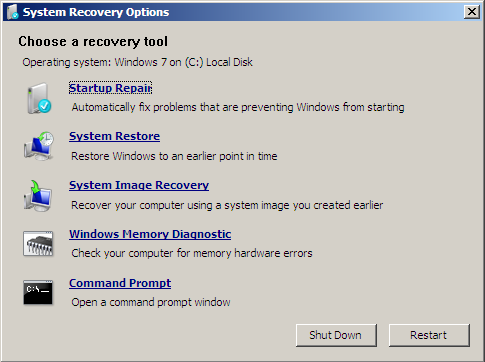
- Continue with the wizard to complete the process
If you don’t have a Repair Your Computer option listed at the Advanced Boot Options screen, you need to use the original installation disc:
- Boot from the installation DVD
- At the Install Windows screen, select your preferred keyboard, language
- Click Next
- Click Repair your computer or press R
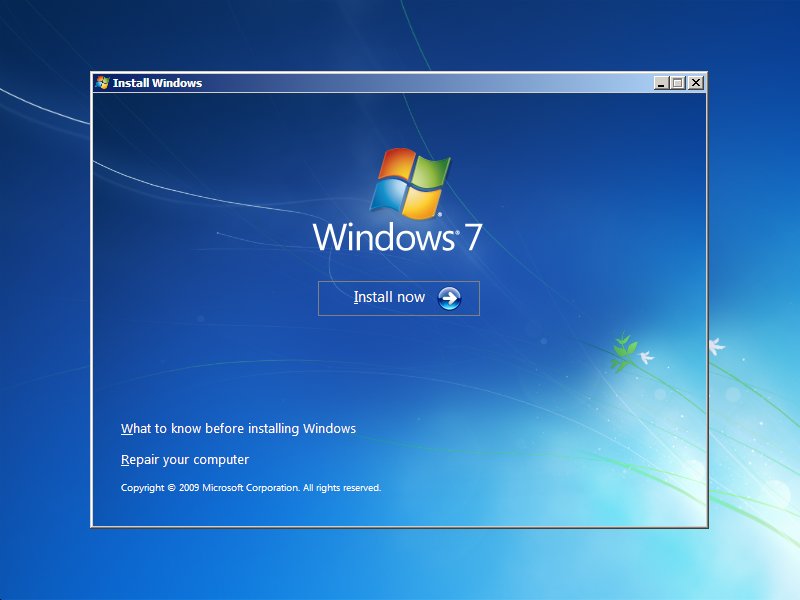
- System Recovery Options should now be available

- Click Startup Repair
- Continue with the wizard to complete the process
Fix 0x0000005A on Windows 8
Fix #1: Uninstall device drivers
Like on Windows Vista and 7 systems, uninstalling incompatible device drivers can fix the 0x0000005A error. To do that, you can boot your Windows 8 or Windows 8.1 system into Safe Mode to uninstall the drivers from Control Panel.
Depending on your system, try these following methods to boot into Safe Mode.
Method #1
Windows 8/8.1 systems are usually installed on computers with UEFI, so this combination of keys would not work, but you can try it.
- Restart the computer
- Press F8 or Shift + F8 during booting, but before the Windows 8 logo appears
Method #2
If the F8 key or the combination of Shift + F8 keys isn’t working, use the original installation disc or USB drive to access the Startup Settings menu.
When you reach Startup Settings, you can press F4 to boot into Safe Mode:
If you don’t have the original installation disc/USB, go to Fix 0x0000005A with Easy Recovery Essentials.
- Insert the disc or USB in the drive
- Reboot the system
- Press any key to boot from the DVD or boot from the USB flash drive
- Choose your preferred keyboard layout
- At the Install Windows screen, click Repair your computer

- Click Troubleshoot
- Click Advanced options
- Click Startup Settings
- Click Start
- At the Startup Settings screen, press F4 to boot into Safe Mode
Fix #2: Temporarily remove hardware
If you recently plugged-in a piece of hardware on your computer, remove it temporarily and restart your computer.
If a hardware is causing the 0x0000005A error, your computer should work at the next boot without the specific hardware added.
Fix 0x0000005A on Windows 10
Fix #1: Uninstall device drivers
Just like on other Windows systems, uninstalling incompatible device drivers can fix the 0x0000005A error. To do that, you can boot your Windows 10 system into Safe Mode to uninstall the drivers from Control Panel.
Depending on your system, try these following methods to boot into Safe Mode.
Method #1
Windows 10 systems are usually installed on computers with UEFI, so this combination of keys would not work, but you can try it.
- Restart the computer
- Press F8 or Shift + F8 during booting, but before the Windows logo appears
Method #2
If the F8 key or the combination of Shift + F8 keys isn’t working, use the original installation disc or USB drive to access the Startup Settings menu.
When you reach Startup Settings, you can press F4 to boot into Safe Mode:
If you don’t have the original installation disc/USB, go to Fix 0x0000005A with Easy Recovery Essentials.
- Insert the disc or USB in the drive
- Reboot the system
- Press any key to boot from the DVD or boot from the USB flash drive
- Choose your preferred keyboard layout
- At the Install Windows screen, click Repair your computer

- Click Troubleshoot
- Click Advanced options
- Click Startup Settings
- Click Start
- At the Startup Settings screen, press F4 to boot into Safe Mode
Fix #2: Temporarily remove hardware
If you recently plugged-in a piece of hardware on your computer, remove it temporarily and restart your computer.
If a hardware is causing the 0x0000005A error, your computer should work at the next boot without the specific hardware added.
More Information
Support Links
- Easy Recovery Essentials for Windows – our repair and recovery disk.
It’s an easy-to-use and automated diagnostics disk. It’s available for Windows 8, Windows 7 and Windows Vista. It’s also available for Windows XP and Windows Server.Read more at Windows Recovery Disks.
- The NeoSmart Support Forums, member-to-member technical support and troubleshooting.
- Get a discounted price on replacement setup and installation discs: Windows XP, Windows Vista, Windows 7, Windows 8, Windows 10.
Applicable Systems
This Windows-related knowledgebase article applies to the following operating systems:
- Windows XP (all editions)
- Windows Vista (all editions)
- Windows 7 (all editions)
- Windows 8 (all editions)
- Windows 8.1 (all editions)
- Windows 10 (all editions)





